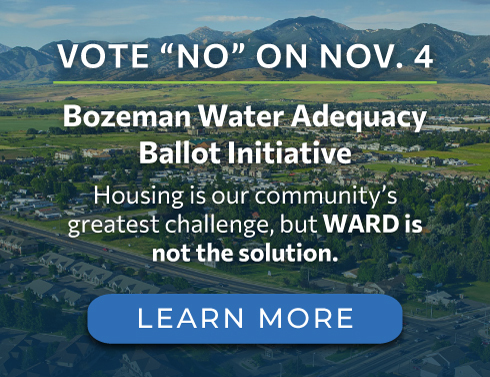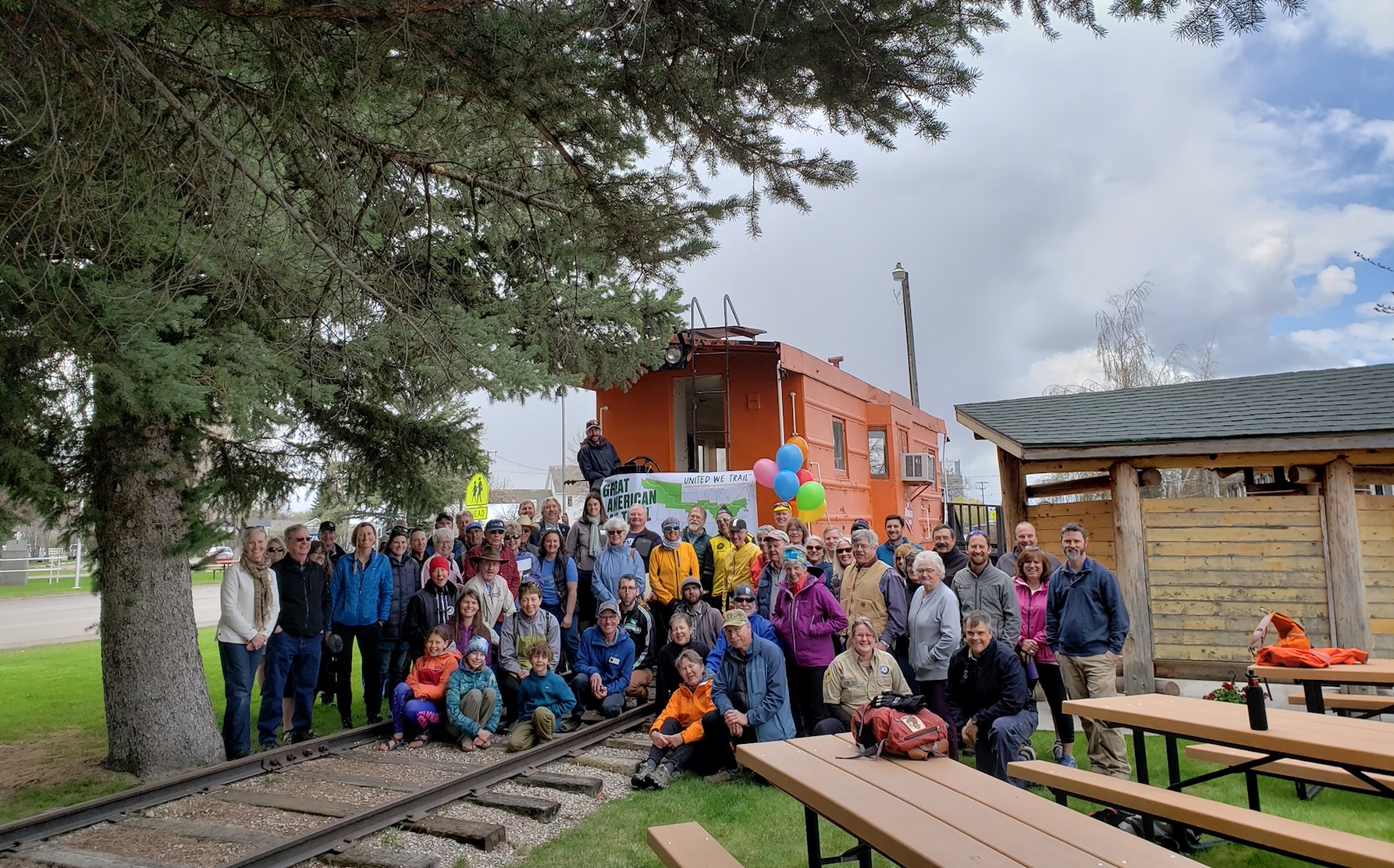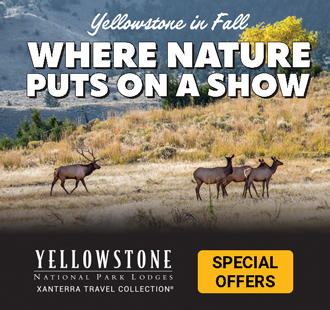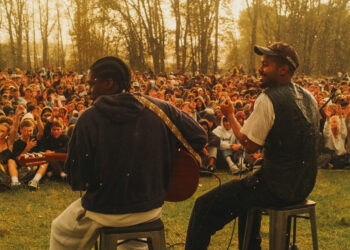Route connects Gallatin Valley to Capitol Hill and Pacific Coast
By Jessianne Castle EBS ENVIRONMENTAL & OUTDOORS EDITOR
THREE FORKS – As the sun shone during a brief reprieve from the rain on May 8, a diverse crowd of 60 or more that included individuals sporting cowboy hats, bike helmets, puff coats and jeans gathered at the John Q. Adams Milwaukee Railroad Park in Three Forks in celebration of a trail that not only runs through Montana, but will also stretch west to Washington state and east to Washington D.C.
Named the Great American Rail-Trail, this route has been a dream for many trail advocates for over three decades. During the May 8 gathering along the existing Headwaters Trail System approximately 60 miles north of Big Sky, the Rails-to-Trails Conservancy unveiled a map outlining their preferred route for the trail, which is approximately 52 percent complete. The unveiling event was echoed across the country at locations in Washington D.C., Columbus, Ohio, and South Cle Elum, Washington, and was broadcast live on Facebook.
“Montana holds a special place on the route,” Rails-to-Trails Conservancy trail planner Kevin Belanger said during opening remarks. Based in D.C., Belanger visited the state during early trail planning, to discuss ways of routing a trail through the Rocky Mountain West. “The excitement was palpable,” he said, nodding to Montana’s “commitment to outdoor recreation and trails.”
Members of Gallatin County were proud to represent their place along the route and during the gathering, Gallatin County Commissioner Don Siefert said it was appropriate for such a large trail network to come through a county where major rivers join to form the Missouri, native peoples gathered for trade and hunts, and through which Lewis and Clark journeyed.
“The trails that run through this county [are] the ribbon that ties the bow [on the national trail,]” he said.
Beginning at the steps of the U.S. Capitol, the trail will move westward through Maryland, Pennsylvania West Virginia, Ohio, Indiana, Illinois, Iowa, Nebraska, Wyoming, Montana and Idaho before culminating along with the Olympic Discovery Trail at the Pacific Ocean. The total distance, 3,700 miles, will be dedicated for multiuse, and serve an estimated 50 million people that live along the route. That means in the decades to come, as existing trail networks are connected with new trails, intrepid outdoorsmen and women will be able to travel coast to coast.
Beyond a trail for trekking across the country though, Belanger said the trail is significant for its inclusion of local trails, and residents and visitors alike will be able to use the trail network, whether hiking, bicycling, cross-country skiing or riding horseback.
As the name indicates, the transcontinental pathway makes use of former railroad beds when possible.
Within Montana, the Great American Rail-Trail will utilize existing trails such as the Headwaters Trail System, as well as the 80 miles of Main Street to the Mountains network that runs through Gallatin Valley. Specifically, the Montana portion will run from Yellowstone National Park out of Gardiner, through Paradise Valley and across Gallatin Valley to Three Forks, then on to Butte and Missoula and into Idaho.
In all, the Montana portion is about 19 percent complete, with 344 miles still to be built. “While that looks like a huge number, I’ve been really impressed with how much of that number is already in the planning,” Belanger said.
“It takes a village to make these trails possible,” said Penelope Pierce, executive director of Gallatin Valley Land Trust, a Bozeman-based organization that helped to expand the Main Street to the Mountains trail network. “By building trails, we build community and trails connect people to the landscape.”
Bob Walker, the president of the Montana Trails Coalition, elaborated further on the economic, health and social benefits that come with a trail such as the Great American Rail-Trail. He said trails can aid with resource protection and are an important aspect of the outdoor industry, which contributes $7.1 billion to the state economy. They bring visitors, who not only travel on the trails, but also spend time in surrounding communities.
“It’s no longer a dream, it’s going to happen,” he said, eliciting a huge cheer. “The future is bright here in Montana. I can’t wait to see people come from all over the world on this trail and enjoy what it means to be under the big sky.”
For more information about the Great American Rail-Trail, visit greatamericanrailtrail.org.














